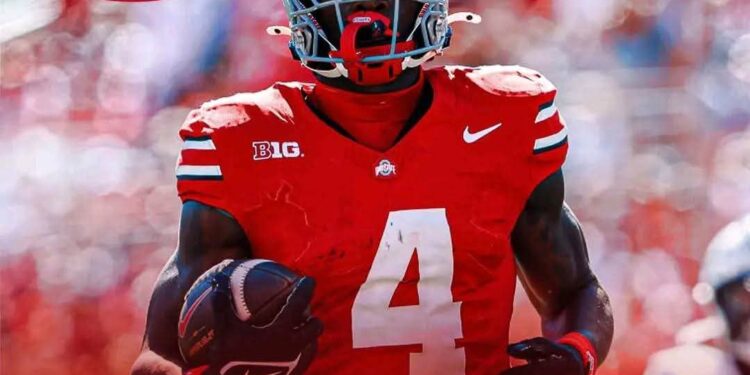Ohio State WR Jeremiah Smith whose current NIL valuation is around $4 Million per On3 has reportedly turned down a tempting jaw-dropping $6.5 million NIL offer from Georgia, reaffirming his commitment to finishing his college career with the Buckeyes . ” I have no plans beyond the Ohio State University.”
NIL deals have emerged as a key component of player retention and recruitment in the dynamic world of college football. With these financial incentives, programs nationwide are competing to draw and retain outstanding personnel, which makes Smith’s choice all the more impressive. After winning several national titles and dominating the SEC, the Georgia Bulldogs made a bold attempt to entice the standout receiver. Smith persisted, nevertheless, preferring loyalty and stability to the greatest
Many people consider Smith to be one of the nation’s most gifted receivers, making him a highly anticipated prospect. Many believe he will be selected in the first round of the NFL Draft because of his outstanding accomplishments for Ohio State. His choice to remain at Ohio State instead of being persuaded by a more lucrative offer elsewhere shows how much he values his growth within the Buckeyes’ system.
Smith responded to the rumors by saying, “I have no plans beyond The Ohio State University.” His unwavering dedication has delivered a powerful message to college football fans in general as well as Buckeyes supporters
For Ohio State, this is a major victory. The Buckeyes have long been a powerhouse in college football, particularly in developing elite wide receivers. With an established history of producing NFL-ready talent, including names like Chris Olave, Garrett Wilson, and Marvin Harrison Jr., Ohio State has positioned itself as one of the best destinations for receivers looking to make it to the next level. Smith’s decision to stay reinforces the program’s credibility and influence.
However, Georgia’s unsuccessful attempt to recruit Smith calls into doubt the efficacy of NIL as a main source of candidates. NIL opportunities are significant, but not all players rely only on them. More important to Smith than a higher salary elsewhere was his relationship with Ohio State, its coaching staff, and his teammates.
This ruling implies that some players still value football’s history and advancement more than monetary rewards.
This situation has generated a lot of discussion in the collegiate football community, with experts offering their opinions on the implications for future NIL deals and player commitments. Smith’s decision.
Meanwhile, Georgia will have to reassess its recruiting strategies. While the Bulldogs remain one of the most dominant programs in the country, this situation is a reminder that not every player can be swayed by financial offers alone. Building strong relationships, offering elite coaching, and fostering a winning culture are still critical components in attracting and retaining talent.
The impact of NIL on college football will continue to be a hot topic. Schools with deep financial backing will always have an advantage in offering competitive deals, but as Smith has shown, money isn’t everything. His decision is likely to be discussed for a long time, setting a precedent for other players who might find themselves in similar situations.












